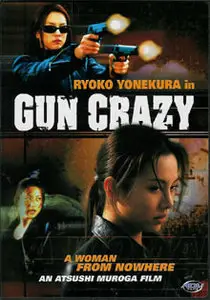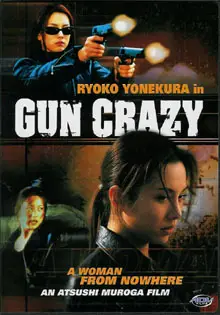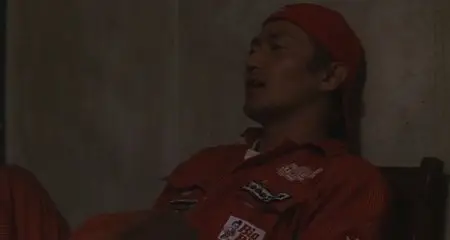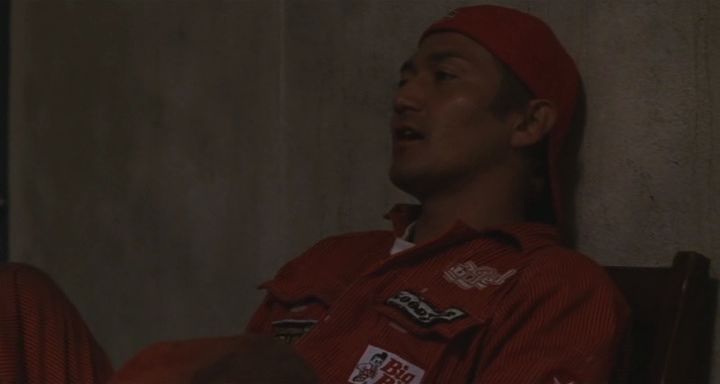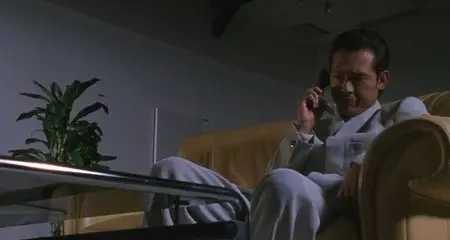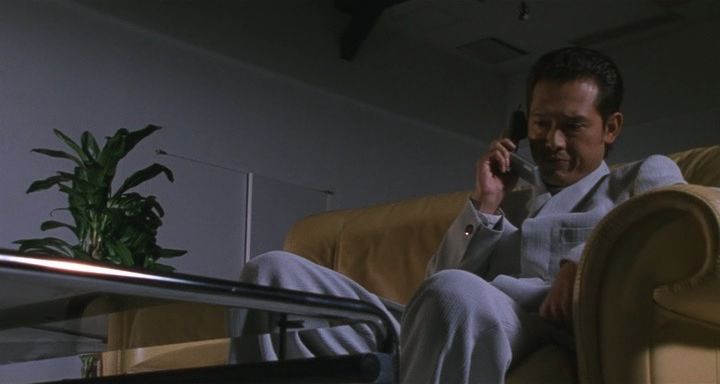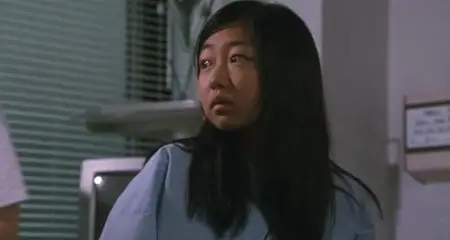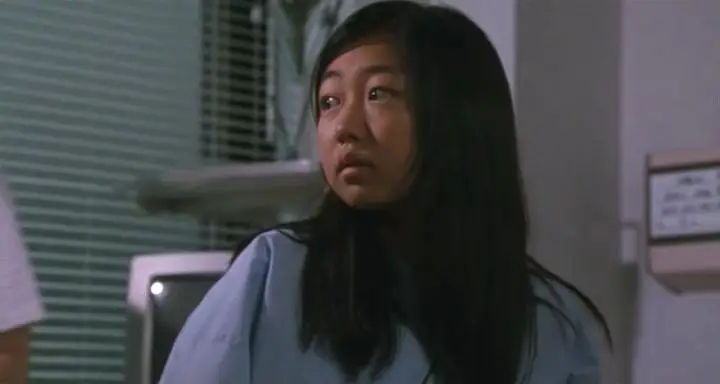Gun crazy - A woman from Nowhere - Atsushi Muroga (2002)
Japanese | Subtitle: English | 1:06:57 | 720 x 384| DiVX | AC3 –224 kbps | 1400 MB
Genre: Action/Thriller
Japanese | Subtitle: English | 1:06:57 | 720 x 384| DiVX | AC3 –224 kbps | 1400 MB
Genre: Action/Thriller
Cast: Ryoko Yonekura, Shingo Tsurumi, Takeshi Yamato, Shun Sugata
An unidentified man, grimacing and sweating profusely, is pulled in half by two trucks to which his arms and legs are chained as another man, bound and gagged, watches in horror. So begins Gun Crazy: A Woman from Nowhere, director Atsushi Muroga's low-budget piece of East-West cinema incest. The film is essentially a remake of Sergio Leone's A Fistful of Dollars, replacing Clint Eastwood's Man With No Name with Saki, a leather-clad, Harley-riding, gun-toting heroine played by Japanese supermodel and television star, Ryoko Yonekura (Musashi). So, what we've got here is a straight-to-video Japanese actioner based on an Italian-made American genre piece, itself a remake of a classic Japanese film, Akira Kurosawa's Yojimbo. What's odd is Muroga riffs solely on Fistful, showing little or no awareness of its Japanese source. He even backs Saki's entrance and final shootout with a piece of music so similar to Ennio Morricone's familiar score it's probably a copyright violation. The windy, dusty shot of Saki's slow approach during the climactic duel evokes both Leone and Kurosawa, but only because the former borrowed so literally from the latter. The billowing of our heroine's leather overcoat, looking like the dusters in Once Upon a Time in the West, is pure homage to Leone.
The story is set in a kind of cultural purgatory, a desolate town on the edge of an American military base, the constant flow of soldiers turning it into a lawless, free-wheeling border town that is neither Japan nor America, but a weird and scary place all its own. Saki rides in on her motorcycle and witnesses a couple GIs brutally murder a bounty hunter come to capture Tojo (Shingo Tsurumi, Dead or Alive: Hanzaisha), a yakuza for whom they work as muscle on the side. (The duo is easily identified as cartoon American soldiers because they wear fatigues and drive around in a Jeep, though one of them speaks English with an Austrian or German accent. Similarly, Muroga's budgetary limitations don't allow for an actual military base, so he gives us regular stock footage inserts of American fighter jets whizzing overhead instead.) Later, Saki runs into the GIs at an American-style bar and easily hands them their asses when they get a little fresh. The villainy of the American soldiers and our heroine's delicious revenge on them is likely Muroga's pandering to an audience livid over a series of sexual assault and rape cases involving GIs and Japanese women around the American base in Okinawa beginning in 1995. As a matter of fact, the rape trial of an American Staff Sergeant was a hot controversy the summer prior to the movie's release, and possibly during its production. It's no accident the accented soldier tries to hide behind an invocation of the U.S. Constitution before Saki blows him away—Japanese had been particularly outraged over the American military's wrangling over Japan's due process laws before handing its accused soldiers over to trial before foreign courts. Seeing a Japanese woman, a supermodel no less, putting the smackdown on American grunts was fulfillment of a timely revenge fantasy for Japanese audiences. It's a relief for the rest of us because the actors playing the soldiers are horrible, and the film rights itself from a shaky start once they're eliminated.
When we finally meet the white-suited Tojo, he's a greasy villain with a perpetual smirk who lights his cigars with a blow torch. A Japanese-American named Fujimoto and his buddy Sam go in with him on a plan to rob a cash transport truck carrying $2,000,000, but Saki foils the heist and makes off with Fujimoto and the money. The daring maneuver gets Tojo's attention, and sets up the final showdown. Like the Man With No Name, Saki's motives for putting herself in harm's way are cloaked in mystery but, unlike Eastwood's gunfighter, we get the feeling early on her grudge against Tojo is personal and linked to the murder that opens the film as well as our heroine's metal leg brace, on which Muroga lingers ominously during her earliest scenes. The Man With No Name takes down the baddies because their abuse of the town's innocents offends his sensibilities; Saki's motives are far less altruistic and they create a loose connection to Toshiya Fujita's Lady Snowblood—this is a heroine singularly bent on vengeance, practically a machine built for the sole purpose of destroying Tojo. It's far more simplistic than Fistful, but by sticking closely to Leone's (read: Kurosawa's) plot points, Gun Crazy is remarkably satisfying for a low-budget actioner. As the saying goes, if you're going to steal, steal from the best.
Since the picture's plot is fundamentally derivative and there was no chance Muroga would deliver the same visual panache as either Kurosawa or Leone, the movie's true asset is the magical allure of a beautiful, hard-as-nails woman who wears tight-fitting clothes, packs lots of heat, and kicks male (and, in one instance, female) butt all over the place. If you're into such stuff, the flick's not to be missed. Two-fisted gun battles, blood-spraying wounds, and slow motion abound. Muroga's shot selections and editing aren't quite deft enough to transform the highly choreographed fight sequences into a completely convincing facsimile of organic chaos, but the action still plays fairly well. Yonekura is believably tough, athletic, and handles the acting competently. Her finest thespian moment comes when she's captured and beaten by the baddies, just like the heroes of Fistful and Yojimbo. Her supermodel status doesn't make her shy about sporting the bludgeoned-face make-up and she suffers her beating with the same wry, anti-authoritarian disdain for her torturers displayed by Eastwood and his precursor Toshiro Mifune. Frankly, Gun Crazy would be charmless drudgery absent Yonekura.
ADV presents the film in a 1.85:1 anamorphic transfer that displays a bit of color fade but is otherwise attractive for a low-budget, straight-to-video flick. Audio is a bit of a disappointment, but only because the default track is an English dub in 5.1 Surround, while the original Japanese is presented in a much thinner stereo mix. The English track is dynamic, what with all the gunfire and fighters zipping overhead, but the voice dubbing is predictably artificial. The Japanese track is fine for what it is, but the robust sound design is short shrifted in stereo.
A 16-minute interview with Yonekura is the only real supplement. Recorded in late 2001, the featurette presents questions on title cards, followed by the actress's answers. The presentation is full screen, video cam quality, and the questions themselves are surface-level (e.g. "How did you like making an action movie?"). The disc also houses an array of trailers for ADV releases, including Gun Crazy: Beyond the Law, the second film in the series, starring supermodel Rei Kikukawa.
RapidShare:
http://rapidshare.com/files/393339645/Gun_Crazy_-_A_Woman_From.Nowhere.part13.rar
http://rapidshare.com/files/393341598/Gun_Crazy_-_A_Woman_From.Nowhere.part12.rar
http://rapidshare.com/files/393341671/Gun_Crazy_-_A_Woman_From.Nowhere.part11.rar
http://rapidshare.com/files/393354579/Gun_Crazy_-_A_Woman_From.Nowhere.part01.rar
http://rapidshare.com/files/393356666/Gun_Crazy_-_A_Woman_From.Nowhere.part03.rar
http://rapidshare.com/files/393356692/Gun_Crazy_-_A_Woman_From.Nowhere.part02.rar
http://rapidshare.com/files/393370892/Gun_Crazy_-_A_Woman_From.Nowhere.part04.rar
http://rapidshare.com/files/393373263/Gun_Crazy_-_A_Woman_From.Nowhere.part06.rar
http://rapidshare.com/files/393373308/Gun_Crazy_-_A_Woman_From.Nowhere.part05.rar
http://rapidshare.com/files/393388321/Gun_Crazy_-_A_Woman_From.Nowhere.part07.rar
http://rapidshare.com/files/393390744/Gun_Crazy_-_A_Woman_From.Nowhere.part08.rar
http://rapidshare.com/files/393390773/Gun_Crazy_-_A_Woman_From.Nowhere.part09.rar
http://rapidshare.com/files/393396333/Gun_Crazy_-_A_Woman_From.Nowhere.part10.rar
http://rapidshare.com/files/393339645/Gun_Crazy_-_A_Woman_From.Nowhere.part13.rar
http://rapidshare.com/files/393341598/Gun_Crazy_-_A_Woman_From.Nowhere.part12.rar
http://rapidshare.com/files/393341671/Gun_Crazy_-_A_Woman_From.Nowhere.part11.rar
http://rapidshare.com/files/393354579/Gun_Crazy_-_A_Woman_From.Nowhere.part01.rar
http://rapidshare.com/files/393356666/Gun_Crazy_-_A_Woman_From.Nowhere.part03.rar
http://rapidshare.com/files/393356692/Gun_Crazy_-_A_Woman_From.Nowhere.part02.rar
http://rapidshare.com/files/393370892/Gun_Crazy_-_A_Woman_From.Nowhere.part04.rar
http://rapidshare.com/files/393373263/Gun_Crazy_-_A_Woman_From.Nowhere.part06.rar
http://rapidshare.com/files/393373308/Gun_Crazy_-_A_Woman_From.Nowhere.part05.rar
http://rapidshare.com/files/393388321/Gun_Crazy_-_A_Woman_From.Nowhere.part07.rar
http://rapidshare.com/files/393390744/Gun_Crazy_-_A_Woman_From.Nowhere.part08.rar
http://rapidshare.com/files/393390773/Gun_Crazy_-_A_Woman_From.Nowhere.part09.rar
http://rapidshare.com/files/393396333/Gun_Crazy_-_A_Woman_From.Nowhere.part10.rar
PW: malamute


